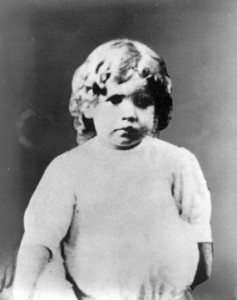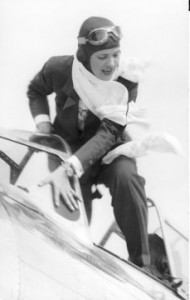Jacqueline Cochran
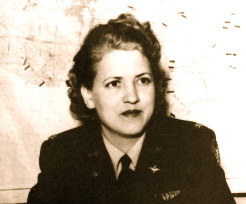
Jacqueline Cochran: Fly Girl by Tamara Sockol
History Fair project- a look at the life of America’s first Fly Girl, Jackie Cochran. Special thanks to Nancy Parrish.
Lt. Col Jacqueline Cochran (May 11, 1906 – August 9, 1980) was a pioneer in the field of American aviation, considered to be one of the most gifted racing pilots of her generation. She was an important contributor to the formation of the wartime Women’s Auxiliary Army Corps (WAAC) and Women Airforce Service Pilots (WASP).
Early Life
Jacqueline Cochran, born Bessie Lee Pittman, in the Florida Panhandle, was the youngest of the five children of Mary (Grant) and Ira Pittman, a skilled millwright who moved from town to town setting up and reworking saw mills. While her family was not rich, Cochran’s childhood living in small-town Florida was similar to those in other families of that time and place. Contrary to some accounts, there was always food on the table and she was not adopted, as she often claimed.
Cochran then became a hairdresser and got a job in Pensacola, eventually winding up in New York City. There, she used her looks and driving personality to get a job at a prestigious salon at Saks Fifth Avenue. Somewhere along the line, she chose to change her name from Miss Bessie Pittman to Miss Jackie Cochran.
Although Cochran denied her family and her past, she remained in touch with them and provided for them over the years. Some of her family even moved to her ranch in California after she remarried. However, they were instructed to always say they were her adopted family. Cochran apparently wanted to hide from the public the early chapters of her life and was successful in doing so until after her death.
Only later did Cochran meet Floyd Bostwick Odlum, founder of Atlas Corp. and CEO of RKO in Hollywood. Fourteen years her senior, he was reputed to be one of the 10 richest men in the world. Odlum became enamored with Cochran and offered to help her establish a cosmetics business.
After a friend offered her a ride in an aircraft, Cochran began taking flying lessons at Roosevelt Airfield, Long Island in the early 1930s and learned to fly an aircraft in just three weeks. She then soloed and within two years obtained her commercial pilot’s license. Odlum, whom she married in 1936 after his divorce, was an astute financier and savvy marketer who recognized the value of publicity for her business. Calling her line of cosmetics Wings, she flew her own aircraft around the country promoting her products. Years later, Odlum used his Hollywood connections to get Marilyn Monroe to endorse her line of lipstick.
Contributions to Aviation
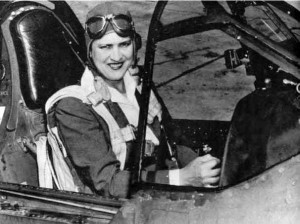 Cochran in the cockpit of a Curtiss P-40 Warhawk.
Cochran in the cockpit of a Curtiss P-40 Warhawk.
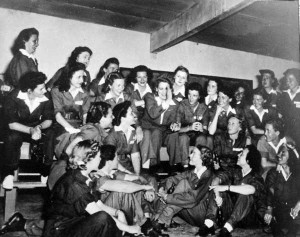 Cochran (center) with WASP trainees
Cochran (center) with WASP trainees
Known by her friends as “Jackie”, and maintaining the Cochran name, she flew in the MacRobertson Air Race in 1934. In 1937, she was the only woman to compete in the Bendix race and worked with Amelia Earhart to open the race to women. That year, she also set a new woman’s national speed record. By 1938, she was considered the best female pilot in the United States. She had won the Bendix and set a new transcontinental speed record as well as altitude records. Cochran was the first woman to fly a bomber across the Atlantic. She won five Harmon Trophiesas the outstanding woman pilot in the world. Sometimes called the “Speed Queen”, at the time of her death, no other pilot held more speed, distance or altitude records in aviation history than Cochran.
Before the United States joined World War II, Cochran was part of “Wings for Britain”, an organization that ferried American built aircraft to Britain, becoming the first woman to fly a bomber (a Lockheed Hudson V) across the Atlantic. In Britain, she volunteered her services to the Royal Air Force. For several months she worked for the British Air Transport Auxiliary (ATA), recruiting qualified women pilots in the United States and taking them to England where they joined the ATA.
In September 1940, Cochran wrote to Eleanor Roosevelt to introduce the proposal of starting a women’s flying division in the Army Air Forces. She felt that qualified women pilots could do all of the domestic, noncombat aviation jobs necessary in order to release more male pilots for combat. She pictured herself in command of these women, with the same standings as Oveta Culp Hobby, who was then in charge of the WAAC. (The WAAC was given full military status on July 1, 1943, thus making them part of the Army. At the same time, the unit was renamed Women’s Army Corps (WAC).) That same year, Cochran wrote a letter to Lt. Col. Robert Olds, who was helping to organize the Air Corps Ferrying Command for the Air Corps at the time. (Ferrying Command was originally a courier/aircraft delivery service, but evolved into the air transport branch of the United States Army Air Forces (USAAF) as the Air Transport Command). In the letter, Cochran suggested that women pilots be employed to fly non-combat missions for the new command. In early 1941, Olds asked Cochran to find out how many women pilots there were in the United States, what their flying times were, their skills, their interest in flying for the country, and personal information about them. She used records from the Civil Aeronautics Administration to gather the data.
In spite of pilot shortages, Lt. General Henry H. “Hap” Arnold was the person who needed to be convinced that women pilots were the solution to his staffing problems. Arnold, Chief of the Air Corps, continued as commanding general of the Army Air Forces upon its creation in June 1941. He knew that women were being used successfully in the ATA in England so Arnold suggested that Cochran take a group of qualified female pilots to see how the British were doing. He promised her that no decisions regarding women flying for the USAAF would be made until she returned.
When Arnold asked Cochran to go to Britain to study the ATA, Cochran asked 76 of the most qualified female pilots – identified during the research she had done earlier for Olds – to come along and fly for the ATA. Qualifications for these women were high: at least 300 hours of flying time, but most of the women pilots had over 1,000 hours. Those that made it to Canada found out that the washout rate was also high. A total of 25 women passed the tests and, two months later in March 1942 they went to Britain with Cochran to join the ATA.
While Cochran was in England, in September 1942, General Arnold authorized the formation of the Women’s Auxiliary Ferrying Squadron (WAFS) under the direction of Nancy Harkness Love. The WAFS began at Castle Air Base in Wilmington, Delaware, with a group of female pilots whose objective was to ferry military aircraft. Hearing about the WAFS, Cochran immediately returned from England. Cochran’s experience in Britain with the ATA convinced her that women pilots could be trained to do much more than ferrying. Lobbying Arnold for expanded flying opportunities for female pilots, he sanctioned the creation of the Women’s Flying Training Detachment (WFTD), headed by Cochran. In August 1943, the WAFS and the WFTD merged to create the Women Airforce Service Pilots (WASP) with Cochran as director and Nancy Love as head of the ferrying division.
As director of the WASP, Cochran supervised the training of hundreds of women pilots at the former Avenger Field in Sweetwater, Texas. For her war efforts, she received the Distinguished Service Medal and the Distinguished Flying Cross.
Postwar
Cochran with General Hap Arnold
At war’s end, Cochran was hired by a magazine to report on global postwar events. In this role, she witnessed Japanese General Tomoyuki Yamashita‘s surrender in the Philippines and was then the first non-Japanese woman to enter Japan after the War and attended the Nuremberg Trials in Germany.
In 1948, Cochran joined the U.S. Air Force Reserve where she eventually rose to the rank of lieutenant colonel.
Flying Records
Postwar, Cochran began flying the new jet aircraft, going on to set numerous records; most conspicuously, she became the first woman pilot to “go supersonic.”
Encouraged by then-Major Chuck Yeager, with whom Cochran shared a lifelong friendship, on May 18, 1953, at Rogers Dry Lake, California, Cochran flew a Canadair F-86 Sabre jet borrowed from the Royal Canadian Air Force at an average speed of 652.337 mph, becoming the first woman to break the sound barrier.
Cochran was also the first woman to land and take off from an aircraft carrier, the first woman to reach Mach 2 in a Northrop T-38 Talon, the first woman to pilot a bomber across the North Atlantic (in 1941) and later to fly a jet aircraft on a transatlantic flight, the first pilot to make a blind (instrument) landing, the only woman ever to be president of the Fédération Aéronautique Internationale (1958–1961), the first woman to fly a fixed-wing, jet aircraft across the Atlantic, the first pilot to fly above 20,000 ft with an oxygen mask, and the first woman to enter the Bendix Transcontinental Race. She still holds more distance and speed records than any pilot living or dead, male or female.
Because of her interest in all forms of aviation, Cochran flew the Goodyear Blimp in the early 1960’s with Goodyear Blimp Captain R. W. Crosier in Akron, Ohio.
Mercury 13
In the 1960’s, Cochran was a sponsor of the Mercury 13 program, an early effort to test the ability of women to be astronauts. Thirteen women pilots passed the same preliminary tests as the male astronauts of the Mercury program before the program was cancelled. It was never a NASA initiative, though it was spearheaded by two members of the NASA Life Sciences Committee, one of whom, William Randolph Lovelace II, was a close friend of Cochran and her husband. Though Cochran initially supported the program, she was later responsible for delaying further phases of testing, and letters from her to members of the Navy and NASA expressing concern over whether the program was to be run properly and in accordance with NASA goals may have significantly contributed to the eventual cancellation of the program. It is generally accepted that Cochran turned against the program out of concern that she would no longer be the most prominent female aviator.
Congress held hearings to determine whether or not the exclusion of women from the astronaut program was discriminatory, during which John Glenn and Scott Carpenter testified against admitting women to the astronaut program. Cochran herself argued against bringing women into the space program, saying that time was of the essence, and moving forward as planned was the only way to beat the Soviets in the Space Race. (None of the women who had passed the tests were military jet test pilots, nor did they have engineering degrees, which were the two basic experiential qualifications for potential astronauts. Women were not allowed to be military jet test pilots at that time. On average, however, they all had more flight experience than the male astronauts). “NASA required all astronauts to be graduates of military jet test piloting programs and have engineering degrees. In 1962, no women could meet these requirements.” This ended the Mercury 13 program.


